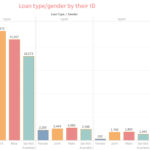Truth Behind Israel’s Offensive on Hezbollah After Harmas

What is The Truth Behind Israel’s Offensive on Hezbollah After Harmas? The truth behind Israel’s offensive on Hezbollah after Harmas stems from a combination of long-standing security concerns, regional power struggles, and Iran’s influence over Hezbollah.
Israel views Hezbollah as an immediate and growing threat, particularly after Harmas’ attacks, which heightened tensions and revealed vulnerabilities. This offensive is not just about defense but also a strategic move to weaken Iran’s proxies and maintain regional dominance.
The skies over the Middle East are heavy with tension, as once again, Israel’s offensive on Hezbollah captures global attention.
What ignited this latest surge of hostilities? In the aftermath of Harmas’ devastating attacks, whispers and headlines swirl, painting different narratives.
But beneath the chaos lies a more complex reality—the truth behind Israel’s offensive is far more intricate than surface-level analysis reveals.
This is not just another clash. It’s a calculated military strategy driven by deeper political motives, historical grudges, and a web of alliances that stretch beyond borders.
While the world watches with bated breath, it’s crucial to unpack the real forces at play. Hezbollah after Harmas isn’t just reacting; it’s recalibrating.
The group, known for its strategic guerilla warfare, has become an even greater threat in Israel’s eyes—fueled by regional shifts and external support.
And Israel? It’s not simply retaliating. It’s orchestrating a precision-driven campaign to disrupt what it sees as an existential threat. But is this offensive truly about national security, or are there larger geopolitical ambitions at work?
As the battle lines are drawn, one thing is clear: both sides are in for a long, arduous conflict, one that will reshape not just the power dynamics of the Middle East but could potentially drag global players into its orbit.
Understanding the intricacies behind Israel’s offensive demands more than passive observation—it requires a deep dive into the truth that many are not ready to face.
Unveiling the Complexity of the Conflict
The Middle East has long been a theater of intricate geopolitical struggles, where age-old hostilities and emerging threats intertwine.
Among the most enduring and volatile of these conflicts is the tension between Israel and Hezbollah. This hostility, layered with historical grievances and regional power plays, remains at the forefront of Middle Eastern politics to know the truth Behind Israel’s Offensive
However, Behind Israel’s Offensive, the latest escalation involving Israel, Hezbollah, and Hamas has introduced a new dimension to this already explosive relationship.
The complexities of this conflict run deep, with each action rooted in decades of political, ideological, and military maneuvers.
To fully grasp the present situation, one must journey back through the annals of history, where this hostile dynamic first took shape.
Historical Background
To understand the historical background, of the current animosity between Israel and Hezbollah, one must examine the roots of their conflict.
This enmity dates back to the 1980s, a period marked by Israel’s attempts to exert influence in Lebanon. Hezbollah emerged as a direct response to Israel’s military presence, positioning itself as a defender of Lebanese sovereignty and Shia interests.
Israel, on the other hand, viewed Hezbollah as an Iranian-backed insurgency intent on destabilizing its northern borders.
Over the years the truth Behind Israel’s Offensive, this antagonism has deepened, transforming into a proxy battle with broader regional implications, particularly as Hezbollah’s military and political clout grew.
The 1982 Invasion of Lebanon: The Spark That Ignited the Conflict
The turning point that Spark Ignited the Conflicts and the stage for the protracted hostility between Israel and Hezbollah was Israel’s 1982 invasion of Lebanon.
Aimed at dismantling Palestinian Liberation Organization (PLO) strongholds, the invasion also destabilized Lebanon’s delicate political fabric. In the wake of this incursion, Hezbollah was formed with Iranian support, initially as a resistance group opposing the Israeli occupation.
The invasion galvanized Hezbollah, which sought to expel Israeli forces from southern Lebanon, marking the beginning of a conflict that has ebbed and flowed in intensity for decades.
The Hezbollah’s Formation
Hezbollah, meaning “Party of God,” was founded in the early 1980s as a Shia resistance movement with a singular focus: to fight Israeli occupation.
Over time, Hezbollah has evolved into more than just a militant organization; it has morphed into a formidable political and military entity, wielding significant influence within Lebanon.
What began as a grassroots resistance movement quickly transformed into a well-funded, well-armed force, with substantial backing from Iran.
This evolution has altered the balance of power in the region, positioning Hezbollah as a key player in the broader Middle Eastern geopolitical arena.
Hamas and Hezbollah: The Shared Ideological Battle Against Israel
While Hezbollah and Hamas represent different sects of Islam—Shia and Sunni respectively—their opposition to Israel binds them in a shared ideological struggle.
Both organizations view Israel as an occupying force, albeit from different vantage points. Hamas is primarily focused on Palestinian liberation, while Hezbollah’s interests lie in safeguarding Lebanese sovereignty and Shia interests in the region.
Despite these distinctions, their military actions and rhetoric often align, particularly in moments of heightened conflict with Israel.
This shared enmity creates a dynamic where the actions of one group can precipitate or amplify the military response against the other.
Hamas, based in Gaza, has been a central figure in the broader Israeli-Palestinian conflict. However, its actions often have ripple effects that extend beyond the borders of Gaza.
Every escalation between Hamas and Israel introduces the potential for broader regional conflict. Hezbollah, although focused on Lebanon, is deeply invested in the Palestinian cause and views Israeli actions against Hamas as a precursor to its own confrontation with Israel.
When Hamas launches rockets or organizes military incursions, it indirectly sets the stage for a wider regional conflict, dragging in actors like Hezbollah, who are waiting for the right moment to strike.
The Rise of Hezbollah: From Guerrilla Warfare to Regional Power
In the years since its formation, Hezbollah has undergone a remarkable transformation. No longer a mere guerrilla group,
Hezbollah has developed into a full-fledged military power with a sophisticated arsenal that includes precision-guided missiles, drones, and other advanced weaponry.
This evolution has not gone unnoticed by Israel, which increasingly views Hezbollah as a significant and existential threat.
Hezbollah’s military capabilities, combined with its political control in Lebanon, give it the unique ability to influence regional dynamics in a way few other non-state actors can.
Hezbollah’s Growing Influence in Lebanon’s Political Landscape
Hezbollah’s influence is not confined to the battlefield. Over the years, it has steadily increased its political power within Lebanon, embedding itself into the country’s political system.
By aligning with key political factions and leveraging its military strength, Hezbollah has become a dominant force in Lebanese governance.
This dual role—as both a political actor and a military organization—complicates Israel’s approach to confronting Hezbollah, as any offensive against the group could have wide-ranging implications for Lebanon as a whole, destabilizing an already fragile political landscape.
Israel’s Precarious Security Situation
For Israel, Hezbollah represents the most immediate and dangerous threat to its northern borders. The group’s proximity to Israel, coupled with its growing stockpile of missiles capable of reaching deep into Israeli territory, creates an ever-present security concern.
Israel’s military and intelligence apparatuses are acutely aware of the threat Hezbollah poses, and much of its defense strategy is geared toward mitigating the risk of a full-scale confrontation with the group.
Hezbollah’s strategic position in southern Lebanon, just miles from key Israeli cities, underscores the precariousness of Israel’s northern security situation.
Recent Events: The Catalyst for the Latest Escalation
The latest escalation between Israel and Hezbollah cannot be viewed in isolation. Rather, it is the culmination of years of simmering tensions, exacerbated by recent developments in Gaza and beyond. Following a series of attacks by Hamas,
Israel found itself on high alert, anticipating that Hezbollah might seize the opportunity to strike while the Israeli military was preoccupied.
These events have set the stage for a potential multi-front conflict, with Hezbollah poised to engage Israel at a moment’s notice. The current military operations are a reflection of Israel’s need to preemptively address the threats posed by both Hamas and Hezbollah.
Hamas’ recent attacks on Israeli territory served as a flashpoint for the broader conflict. Israel’s military response was swift, targeting key Hamas infrastructure in Gaza. However, the possibility of Hezbollah joining the fray loomed large.
Israel’s military leadership understood that any sustained campaign against Hamas could provoke Hezbollah to launch its offensive.
This delicate balance of power means that every action in Gaza carries the risk of escalation on Israel’s northern front, further complicating the conflict dynamics.
Hezbollah’s Response: Why Israel Views Hezbollah as the Next Threat
Hezbollah’s calculated responses to Israeli actions suggest a strategic approach to conflict. While the group has refrained from fully engaging Israel in recent months, its rhetoric and military posturing indicate that it is prepared to escalate the situation if necessary.
Israel views this as a significant threat, not only because of Hezbollah’s military capabilities but also because of the group’s ability to destabilize the entire northern region.
The specter of a coordinated attack from both Hamas and Hezbollah presents Israel with a strategic dilemma, forcing it to prepare for a potential two-front war.
Hezbollah’s military capabilities have grown significantly in recent years, posing a serious challenge to Israeli defense systems.
The group now possesses an array of advanced weaponry, including long-range rockets, anti-tank missiles, and unmanned aerial vehicles (UAVs). This arsenal, much of it supplied by Iran, allows Hezbollah to threaten key Israeli infrastructure and civilian populations.
Israel’s concerns are compounded by Hezbollah’s ability to carry out precision strikes, a capability that has dramatically shifted the balance of power in the region. For Israel, neutralizing this threat is a top priority.
Iran’s Shadow: The Role of Tehran in Supporting Hezbollah
Iran’s influence in the Israel-Hezbollah conflict cannot be overstated. As Hezbollah’s primary benefactor, Iran provides both financial and military support to the group, viewing it as a crucial ally in its broader strategy to counter Israeli influence in the region.
Iran’s role as a regional power broker has only deepened its ties with Hezbollah, behind Israel’s offensive is allowing it to exert influence over Lebanese politics while maintaining a proxy force capable of engaging Israel.
For Israel, any confrontation with Hezbollah is also a confrontation with Iran, adding yet another layer of complexity to the conflict.
The conflict between Israel and Hezbollah is not just a bilateral struggle; it is part of a larger regional power play involving Iran, Israel, and other Middle Eastern actors. Iran’s ambitions to dominate the region and expand its influence are often at odds with Israel’s desire to maintain its security and sovereignty.
This regional power struggle fuels the conflict, as both Israel and Iran view Hezbollah as a key component of their strategic calculus. The battle for dominance in the Middle East is thus fought through proxy wars, with Hezbollah at the center of this geopolitical tug-of-war.
Israel’s Strategy: The Doctrine of Preemptive Defense
Israel’s military strategy is grounded in the doctrine of preemptive defense—a belief that the best way to secure the nation is to strike first when a threat emerges.
This doctrine has shaped Israel’s approach to Hezbollah, leading to a series of preemptive strikes designed to weaken the group before it can launch a significant attack.
Israel’s military leadership is acutely aware of the dangers posed by Hezbollah’s growing arsenal, behind Israel’s offensive, and its preemptive actions are aimed at disrupting the group’s capacity to wage war.
However, this approach also carries risks, as it can escalate tensions and provoke a wider conflict.
Israel’s military tactics in its confrontations with Hezbollah are multifaceted, combining air strikes with potential ground campaigns.
The Israeli Air Force is frequently deployed to target Hezbollah’s infrastructure, including weapons depots, command centers, and supply lines.
However, air power alone is often insufficient to neutralize Hezbollah’s deeply entrenched forces. Ground campaigns, though risky, have occasionally been launched to push Hezbollah back and disrupt its operations.
Israel’s military calculus in these campaigns is always weighed against the potential for significant casualties and the risk of drawing Lebanon further into the conflict.
The Role of International Organizations: Calls for Ceasefires and Peace
International organizations, including the United Nations and various humanitarian groups, have long called for ceasefires and peace talks to resolve the Israel-Hezbollah conflict
Despite these efforts, achieving a lasting peace has proven elusive, as both sides remain entrenched in their positions.
International pressure has occasionally led to temporary ceasefires, but these have often been short-lived, with hostilities resuming soon after.
The failure to secure a lasting resolution has left the region in a perpetual state of tension, with international organizations continuing to play a mediating role, albeit with limited success.
The Global Response: How Major Powers Are Reacting to the Offensive
The Israel-Hezbollah conflict has drawn the attention of major global powers, each with its own vested interests in the region.
The United States has traditionally supported Israel, providing military aid and diplomatic backing, behind Israel’s offensive while Russia has sought to maintain a delicate balance, fostering ties with both Iran and Israel.
The European Union, for its part, has called for restraint and emphasized the need for a diplomatic solution, often criticizing the humanitarian toll of the conflict. These global responses reflect the complex web of alliances and rivalries that characterize international relations in the Middle East.
The United States and Israel: A Complicated Alliance in Times of War
The relationship between the United States and Israel is both long-standing and multifaceted. While the U.S. has been a steadfast ally of Israel, particularly in times of war, this alliance is not without its complications.
U.S. administrations often find themselves walking a fine line between supporting Israel’s security needs and addressing broader concerns about regional stability and human rights.
In the context of the Israel-Hezbollah conflict , behind Israel’s offensive, the U.S. has consistently provided Israel with military aid, but it has also called for caution, particularly when civilian casualties mount.
Russia’s role in the Middle East is one of careful diplomacy, as it seeks to maintain relationships with both Iran and Israel.
Moscow’s influence in the region has grown in recent years, particularly through its military involvement in Syria, where it has worked closely with both the Assad regime and Iranian forces.
At the same time, Russia has cultivated diplomatic and economic ties with Israel, making it a key player in the delicate balance of power in the Middle East.
This dual approach allows Russia to wield considerable influence over the region’s conflicts, including the Israel-Hezbollah standoff.
The European Union has consistently called for diplomacy and respect for human rights in the Israel-Hezbollah conflict.
European leaders have expressed concern over the humanitarian impact of the violence, urging both sides to return to the negotiating table.
The EU’s position is shaped by its broader commitment to peace and stability in the Middle East, as well as its interest in preventing further refugee flows into Europe.
However, the EU’s influence in the conflict remains limited, as its calls for restraint are often overshadowed by the more assertive actions of regional and global powers.
The Roadblocks to Peace: Why Diplomacy Has Failed So Far
Despite numerous attempts at diplomacy, a lasting peace between Israel and Hezbollah remains elusive.
Several factors contribute to this failure, including deep-seated mistrust, the involvement of external powers, and the divergent objectives of the two sides.
behind Israel’s offensive, Hezbollah’s close ties to Iran and its commitment to armed resistance against Israel make negotiations difficult, while Israel’s security concerns drive its reluctance to engage in talks with a group it views as a terrorist organization.
These roadblocks have made it nearly impossible to achieve a sustainable ceasefire, let alone a comprehensive peace agreement.
Long-Term Consequences: What Happens if the Conflict Continues
What Happens if the Conflict Continues, that is, Israel-Hezbollah conflict continues unabated, the consequences for the region could be dire. Prolonged violence would likely result in further civilian casualties and displacement, exacerbating the humanitarian crisis in Lebanon and Israel.
The conflict could also destabilize the broader Middle East, drawing in other regional actors and increasing the risk of a full-scale war.
Additionally, behind Israel’s offensive, the continued hostilities would hinder any prospects for peace in the region, leaving future generations to inherit a cycle of violence and instability.
While the path to peace may seem distant, several potential scenarios could lead to a resolution of the Israel-Hezbollah conflict.
One possibility is the emergence of a new diplomatic initiative, backed by international actors, aimed at fostering dialogue between the two sides.
Another scenario involves a shift in the regional balance of power, where changes in Iran’s role or a realignment of Middle Eastern alliances could create new opportunities for peace.
Ultimately, the resolution of this conflict will require a combination of political will, diplomatic creativity, and a commitment to addressing the underlying causes of the hostility.
Conclusion: Understanding the True Stakes of the Israel-Hezbollah Conflict
In conclusion, The ongoing conflict between Israel and Hezbollah is far more than a localized military skirmish; Behind Israel’s offensive is a complex, multi-dimensional struggle with far-reaching implications for the entire Middle East.
At its core, the conflict reflects deeper regional dynamics, including the power struggle between Israel and Iran, the role of non-state actors in modern warfare, and the profound humanitarian toll of prolonged hostilities.
Understanding the true stakes of this conflict requires a nuanced appreciation of its historical roots, its present-day realities, and the potential future consequences for the region and beyond








